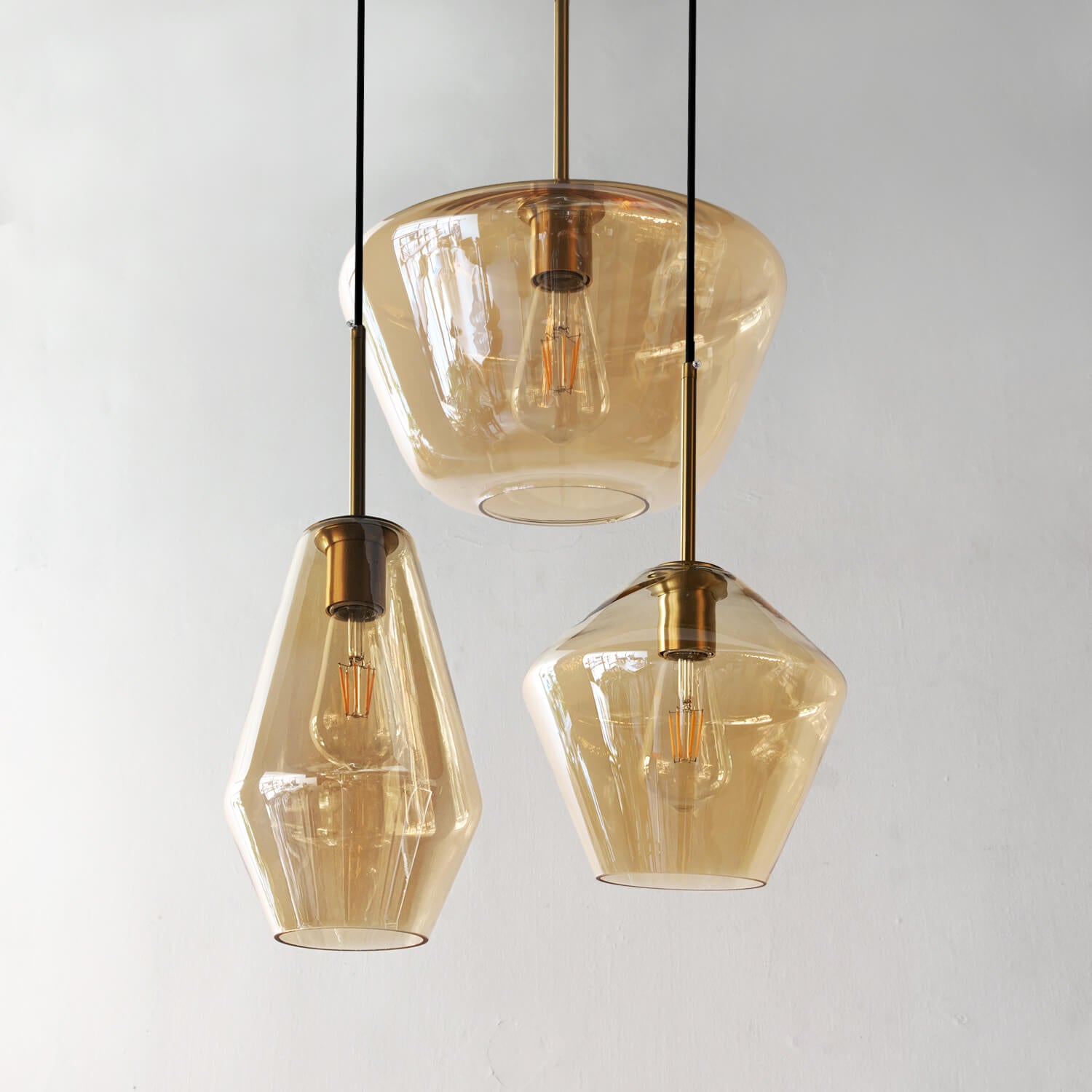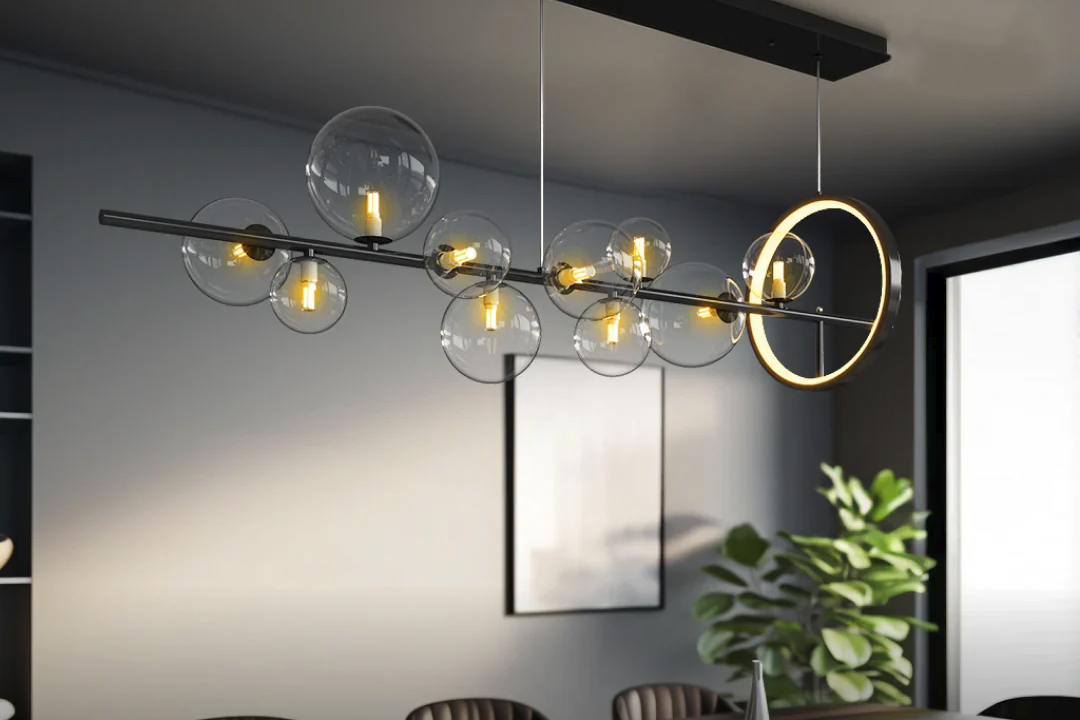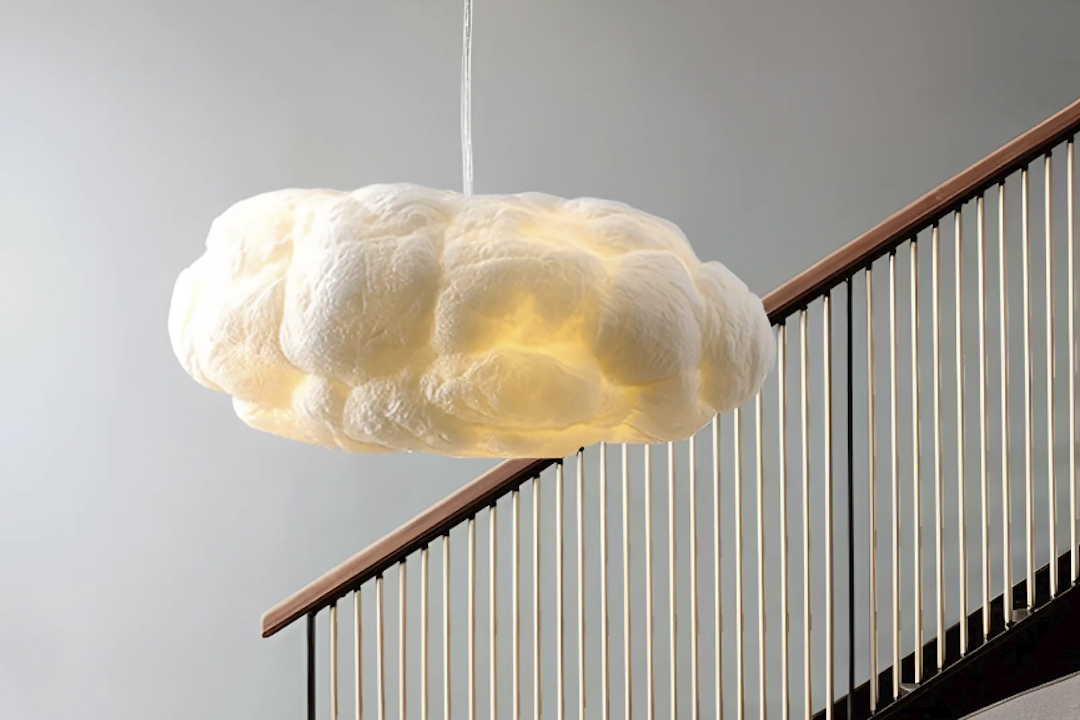Industry pendant lamps, also known as industrial pendant lamps, are a type of lighting fixture that originated from the industrial era. These lamps are characterized by their utilitarian design and use of materials such as metal, glass, and concrete. They are typically suspended from the ceiling by a cord or chain and provide focused lighting in a specific area.
The history of industry pendant lamps can be traced back to the early 20th century when factories and warehouses started using pendant lighting for their practicality and efficiency. These lamps were designed to provide bright and direct lighting to work areas, allowing workers to see clearly and perform their tasks effectively. Over time, the industrial design aesthetic gained popularity in interior design, leading to the incorporation of industry pendant lamps in residential and commercial spaces.
The Versatility of Industry Pendant Lamps
One of the key reasons why industry pendant lamps have become so popular is their versatility. These lamps can be used in various interior design styles, ranging from industrial and rustic to modern and minimalist. Their simple and understated design allows them to blend seamlessly with different decor themes.
Moreover, industry pendant lamps can be used in different areas of the house. They are commonly seen in kitchens, where they are often installed over kitchen islands or dining tables to provide task lighting. However, they can also be used in living rooms, bedrooms, and even bathrooms to add a touch of industrial charm.
Industrial Design Meets Modern Style
One of the most appealing aspects of industry pendant lamps is the combination of industrial and modern design elements. The industrial design aesthetic is characterized by its raw and unfinished look, with exposed bulbs, metal shades, and utilitarian features. On the other hand, modern design focuses on clean lines, minimalism, and sleek finishes.
When these two styles come together, it creates a unique and visually striking look. The industrial elements add character and warmth to a space, while the modern elements bring a sense of sophistication and elegance. This combination of styles can be seen in the design of industry pendant lamps, making them a popular choice for those who want to add a touch of industrial charm to their modern interiors.
The Different Types of Industry Pendant Lamps
Industry pendant lamps come in various shapes and designs, each with its own unique characteristics. Some of the most common types include dome-shaped, bell-shaped, cone-shaped, and cage-shaped lamps.
Dome-shaped pendant lamps feature a rounded shade that directs the light downwards, creating a focused and intimate lighting effect. These lamps are often used in kitchens and dining areas to provide task lighting.
Bell-shaped pendant lamps have a more traditional and elegant look. The curved shape of the shade allows for a wider spread of light, making them suitable for larger spaces such as living rooms or entryways.
Cone-shaped pendant lamps have a sleek and modern design. The tapered shade directs the light downwards, creating a focused and directional lighting effect. These lamps are often used in contemporary interiors to add a touch of industrial charm.
Cage-shaped pendant lamps feature an open design with a metal frame or wire mesh shade. These lamps provide a unique and visually interesting lighting effect, casting intricate shadows on the surrounding surfaces. They are often used as statement pieces in industrial or eclectic interiors.
Materials Used in Industry Pendant Lamps
Industry pendant lamps are typically made from durable and sturdy materials such as metal, glass, concrete, and wood. Each material has its own unique characteristics and contributes to the overall look and feel of the lamp.
Metal is the most common material used in industry pendant lamps due to its durability and industrial aesthetic. It can be finished in various ways, including brushed metal, polished metal, or painted metal, to achieve different looks.
Glass is often used for the shades of industry pendant lamps as it allows for a softer and diffused lighting effect. It can be clear or frosted, depending on the desired level of transparency.
Concrete is a more unconventional material used in industry pendant lamps. It adds a raw and industrial touch to the lamp, making it a popular choice for those who want to make a bold statement.
Wood is another material that is sometimes used in the construction of industry pendant lamps. It adds warmth and natural beauty to the lamp, creating a more rustic and organic look.
The Benefits of Using Industry Pendant Lamps

There are several benefits to using industry pendant lamps in your home or commercial space. Firstly, they provide ample lighting in a specific area, making them ideal for task lighting. Whether you need focused lighting in the kitchen while cooking or in the living room while reading, industry pendant lamps can provide the right amount of light.
Secondly, industry pendant lamps save space compared to traditional floor or table lamps. By suspending the lamp from the ceiling, you free up valuable floor or table space, allowing for a more open and clutter-free environment.
Lastly, industry pendant lamps add character to a space. Their unique design and industrial aesthetic make them stand out and become a focal point in any room. They can enhance the overall ambiance and style of a space, creating a visually interesting and inviting atmosphere.
How to Incorporate Industry Pendant Lamps in Your Home
There are several ways to incorporate industry pendant lamps in your home. One popular placement is over the kitchen island. By installing two or three pendant lamps above the island, you not only provide task lighting for food preparation but also create a visually appealing focal point in the kitchen.
Another option is to use industry pendant lamps in the dining area. By hanging a single pendant lamp or a cluster of smaller ones above the dining table, you create an intimate and cozy atmosphere for meals.
In the living room, industry pendant lamps can be used as statement pieces. Hang a large and eye-catching pendant lamp in the center of the room to create a dramatic effect. Alternatively, use smaller pendant lamps to highlight specific areas such as a reading nook or a seating area.
Industry Pendant Lamps for Commercial Spaces
Industry pendant lamps are not only suitable for residential spaces but also for commercial spaces. In restaurants and cafes, they can add a touch of industrial charm and create a cozy and inviting atmosphere for customers. By using pendant lamps in different sizes and shapes, you can create a visually interesting and dynamic lighting design.
In retail stores, industry pendant lamps can be used to highlight specific areas or products. By strategically placing pendant lamps above display shelves or tables, you draw attention to the merchandise and create a visually appealing shopping experience for customers.
Maintenance and Care for Industry Pendant Lamps
To keep your industry pendant lamps looking their best, regular cleaning and maintenance are necessary. Here are some tips to help you care for your lamps:
– For metal pendant lamps, use a soft cloth or sponge dampened with mild soap and water to clean the surface. Avoid using abrasive cleaners or scrub brushes as they can damage the finish.
– For glass shades, use a glass cleaner or a mixture of vinegar and water to remove any smudges or fingerprints. Wipe the shade gently with a soft cloth or paper towel.
– For concrete pendant lamps, use a soft brush or cloth to remove any dust or dirt. Avoid using harsh chemicals or abrasive cleaners as they can damage the surface.
– For wood pendant lamps, use a wood cleaner or a mixture of mild soap and water to clean the surface. Wipe the wood gently with a soft cloth or sponge.
In addition to regular cleaning, it is important to check the electrical components of your pendant lamps periodically. Make sure that the wiring is intact and there are no loose connections. If you notice any issues, it is best to consult a professional electrician for repairs.
Where to Buy Industry Pendant Lamps
There are several options for purchasing industry pendant lamps. Online stores such as Amazon, Wayfair, and Etsy offer a wide selection of lamps in various styles and price ranges. You can browse through the different options, read customer reviews, and compare prices before making a purchase.
If you prefer to see the lamps in person before buying, you can visit physical stores such as home improvement stores, lighting specialty stores, or furniture stores. These stores often have a display of pendant lamps where you can see and touch the lamps before making a decision.
For those who want a more personalized and unique option, custom-made industry pendant lamps are also available. You can work with a lighting designer or artisan to create a one-of-a-kind lamp that fits your specific needs and style preferences.
In conclusion, industry pendant lamps are versatile lighting fixtures that add character and charm to any space. They can be used in various interior design styles and different areas of the house. The combination of industrial and modern design elements creates a unique and visually striking look.
There are different types of industry pendant lamps, each with its own unique characteristics. They are made from materials such as metal, glass, concrete, and wood, which contribute to their overall look and feel.
Using industry pendant lamps in your home or commercial space provides ample lighting, saves space, and adds character to the space. They can be incorporated in various ways, such as over the kitchen island, in the dining area, or in the living room.
To maintain and care for industry pendant lamps, regular cleaning and maintenance are necessary. It is important to check the electrical components periodically and consult a professional for repairs if needed.
Industry pendant lamps can be purchased from online stores, physical stores, or custom-made options. With their versatility and benefits, it is worth considering incorporating them into your home or commercial space to create a visually appealing and inviting atmosphere.




